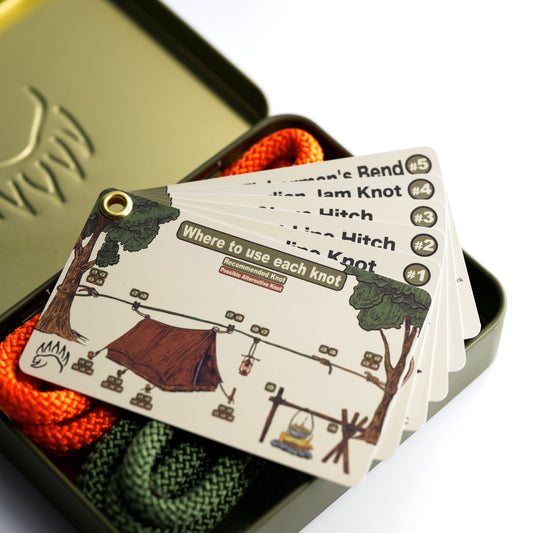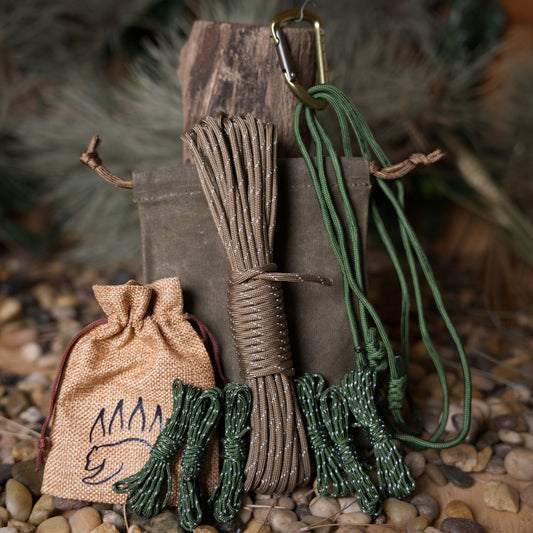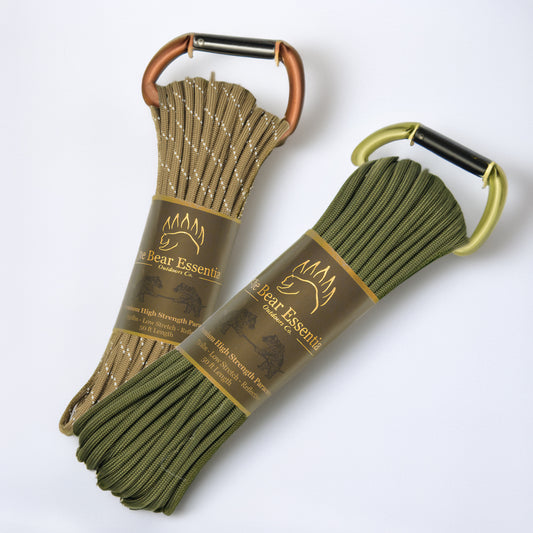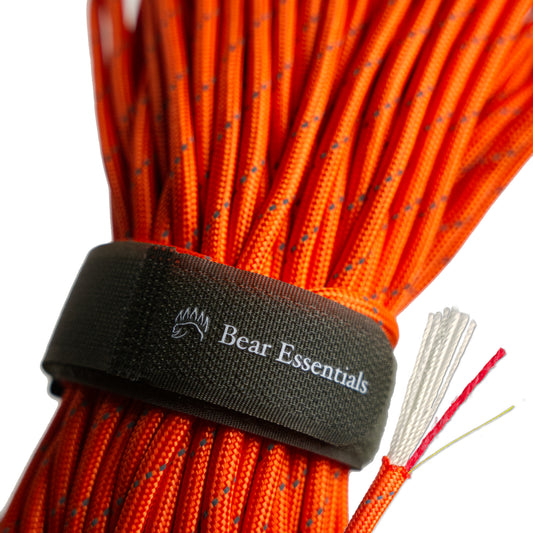How to Tie The Magnus Hitch
Usage
The Magnus Hitch is a reliable friction hitch ideal for securing a rope to a pole, spar, or another line. Common in boating, camping, and general utility, it maintains tension well and can be adjusted when needed. Since both the working and standing ends exit on the same side, it resists twisting and presents a clean, tidy appearance, especially when securing gear like fenders to rails.
Why Learn the Magnus Hitch?
This knot is more twist-resistant than the Rolling Hitch (006), while remaining relatively easy to tie and untie—even after loading. Its slight adjustability makes it practical for situations requiring moderate tension. Though not ideal for extremely slippery synthetic ropes, it outperforms the Rolling Hitch when a neater finish is preferred.
Common Uses
- Boating & Marine: Attaching fenders to lifelines or rails. Securing lines with reduced twist under tension.
- Camping & Bushcraft: Tensioning guy lines on tarps or tents. Creating adjustable anchors or tie-off points.
- Utility & Climbing: Situations requiring moderate-lengthwise tension. General rope work where adjustment and stability are valued.
ABOK Number
(Ashley Book of Knots)
Other Names
Category
|
Notable Features
- Twist Resistant: Resists torsion better than a Rolling Hitch.
- Clean Finish: Both ends exit the same side for neater appearance.
- Adjustable: Offers limited adjustability under tension.
Variations
- Tying it in a slipped form allows for quick release.
- Adding extra wraps can improve grip on smooth poles or synthetic lines.
Similar Knots
Rolling Hitch
- Pros: Strong grip in rope-to-pole applications.
- Cons: More likely to twist under load.
Taut-Line Hitch
- Pros: Adjustable loop knot for tensioning guy lines.
- Cons: Less secure on slippery lines.
Midshipman’s Hitch
- Pros: More secure under tension.
- Cons: Slightly more complex to tie.
Adjustable Grip Hitch
- Pros: Maintains grip under changing tension.
- Cons: Not as well known or widely used.
History
The Magnus Hitch has a tangled naming history dating back to the early 19th century. Originally, it was called the Magner’s Hitch, related to the half hitch knot, and the term “Rolling Hitch” was used to describe what we now know as a Round Turn with Two Half Hitches. This changed in 1841 when Richard Henry Dana Jr. published The Seaman’s Friend, which reassigned the modern names to the knots we recognize today.
Clifford W. Ashley later included the Magnus Hitch as entry #1736 in The Ashley Book of Knots (1944), classifying it as a variation of the Rolling Hitch (#1734) where the final hitch is tied in the opposite direction.
Further confusion arose in scouting and recreational circles, where the Magnus Hitch, Taut-Line Hitch, and Midshipman’s Hitch were often used interchangeably. This inconsistency in naming has led to decades of ambiguity in printed guides and instructional manuals.
History Section Citation/Source:
- Ashley, C. W. (1944). The Ashley Book of Knots. Doubleday.
- Dana, R. H. Jr. (1841). The Seaman’s Friend.
Security Level
The Magnus Hitch provides a stable, moderately secure grip. It is less prone to twisting but can slip under high load or when tied with slick, modern synthetic ropes. Always dress the knot properly to avoid instability.
Downsides
- Slips with Synthetic Rope: Not ideal for high-slick cords.
- Less Holding Power than Icicle Hitch (167): Easier to tie but less secure under heavy load.
- Requires Careful Dressing: Needs precision to ensure reliability.
Structure
- Begin by wrapping the rope around the object in the direction of pull.
- Make a second wrap to form a round turn, progressing toward the pull direction.
- Bring the working end over the standing part and away from the pull.
- Finish with a half-hitch in the opposite direction of the original wraps.
- Dress and tighten the knot by pulling both ends and aligning the wraps neatly.
FAQ
What is the Magnus Hitch used for?
It’s used to secure a rope to a pole, spar, or another rope, particularly in boating, camping, and utility work.
How does it compare to the Rolling Hitch?
The Magnus Hitch resists twisting more and exits cleaner, but may not grip quite as tightly.
Is it easy to untie after being loaded?
Yes, it is easier to untie than many friction hitches, especially if dressed properly.
Can I use the Magnus Hitch with synthetic rope?
You can, but slippage is more likelyconsider extra wraps or a different hitch for added security.
Important Notes on Safety
The Magnus Hitch is best suited for moderate, stable loads and should be avoided in high-stress or life-critical applications. For a more secure grip on slick or loaded lines, consider using the 167 Icicle Hitch or 029 Midshipman’s Hitch.









